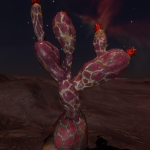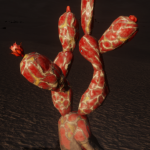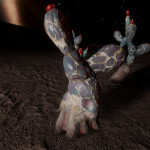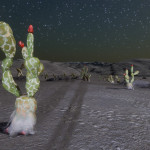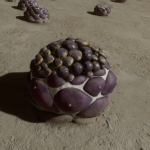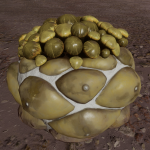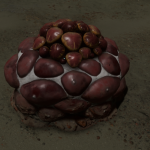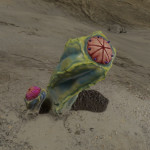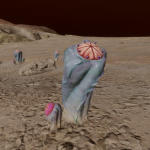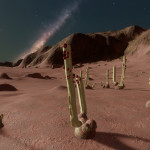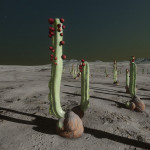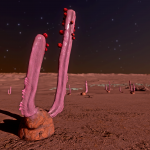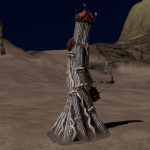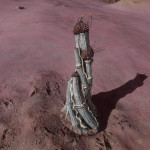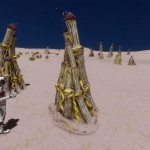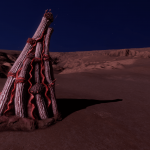Cactoida genus
Description
Photosynthetic organisms that have adapted to extreme conditions by reducing their surface area to volume ratio, thereby protecting more sensitive tissues from exposure.The outer layer is formed from specialised light-transmitting cells. These are filled with an insulating hydrophobic layer, which helps to maintain core temperature and liquid retention. Deep, extensive root structures hold the organisms in place, and facilitate the extraction of trace minerals. Some cactoida species feature explosive seed distribution as a method of reproduction.
Minimum distance between two genetic samples: 300 m
Conditions of occurrence
- Planets with thin Carbon dioxide, Ammonia or Water atmosphere
- Because of atmospheres types: only on Rocky or High Metal Content planets
- Maximum gravity: 0.27
| Atmosphere type | Species |
|---|---|
| Ammonia | Cactoida lapis Cactoida peperatis |
| Carbon dioxide Carbon dioxide rich (180 K - 195 K) | Cactoida cortexum Cactoida pullulanta |
| Eau | Cactoida vermis |
Colored variants
Colored variant determined by the parent star type for all species of Cactoida genus :
| Star type | Color |
|---|---|
| O | |
| B | |
| A | Green |
| F | Yellow |
| G | Teal |
| K | |
| M | Amethyst |
| L | Mauve |
| T | Orange |
| TTS | Red |
| Y | |
| W | |
| D | |
| N | Sage |
Cactoida cortexum

Description
A species of cactoid that can reach over three metres in height. They are composed of multiple growths that sprout sealed pods at their peaks, which open up to distribute seeds.
Conditions of occurrence
- Planets with thin Carbon Dioxide atmosphere
- Maximum gravity: 0.27
- Mean temperature between 180 K and 195 K
Colored variants
Colored variant determined by the parent star type (see above, genus Cactoida)
Cactoida lapis
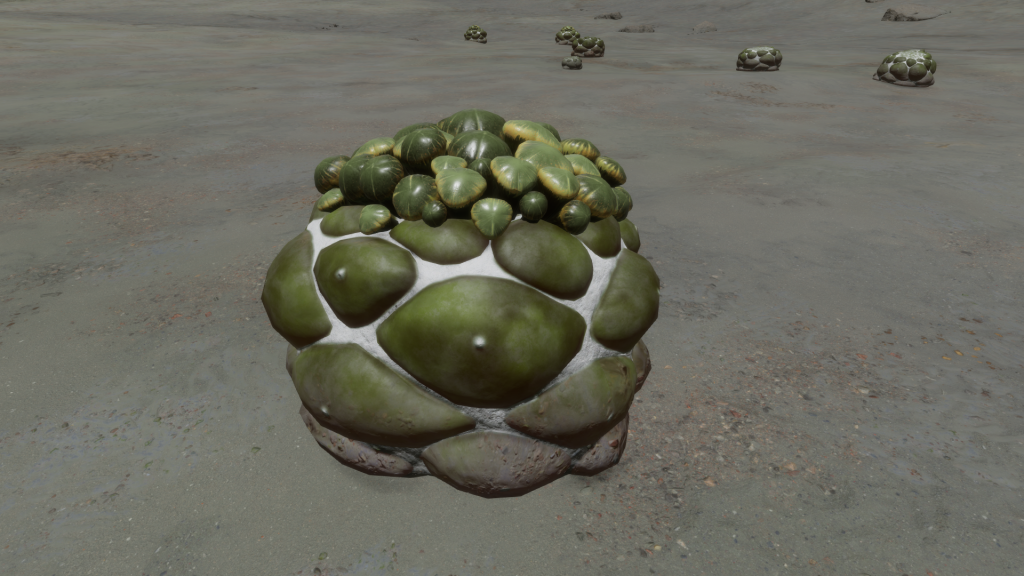
Description
This cactoid species appears as a squat growth with a latficecl upper surface, which eventually produces a cluster of seed pods.
Note: due to a debate about who made the first discovery, there is a second Latin name for this species: Tetonus aymericus. For reasons of consistency in nomenclature, and probably also because of a certain prudery, Vista Genomics uses only the name Cactoida lapis. However, in order to be completely fair, we report this synonym here.
Conditions of occurrence
- Planets with thin Ammonia atmosphere
- Maximum gravity : 0.27
Colored variants
Colored variant determined by the parent star type (see above, genus Cactoida)
Cactoida peperatis
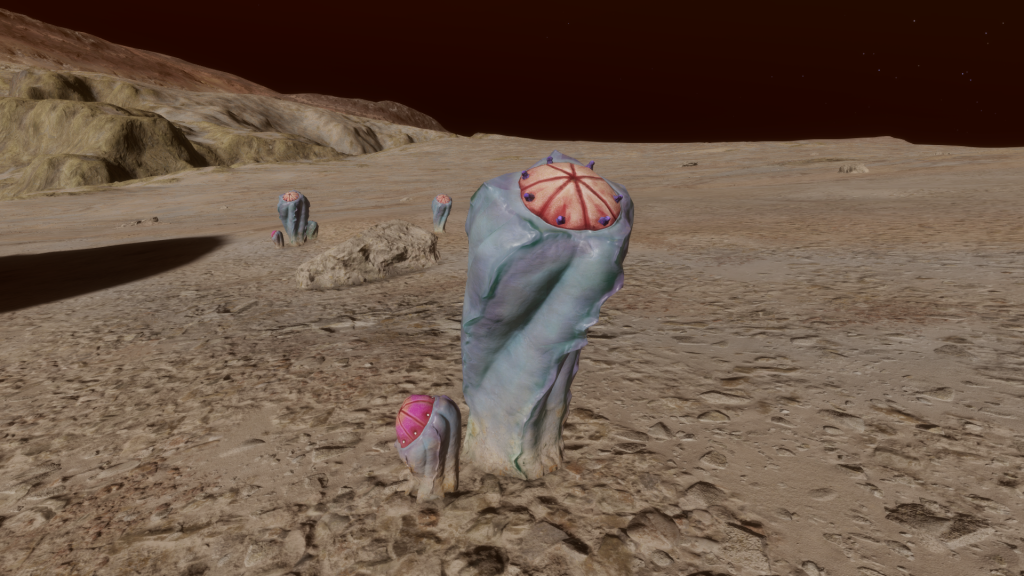
Description
A cactoid species appearing as a swollen five-sided growth, reaching over two metres high and topped with an intersected crown.
Conditions of occurrence
- Planets with thin Ammonia atmosphere
- Maximum gravity : 0.27
Colored variants
Colored variant determined by the parent star type (see above, genus Cactoida)
Cactoida pullulanta
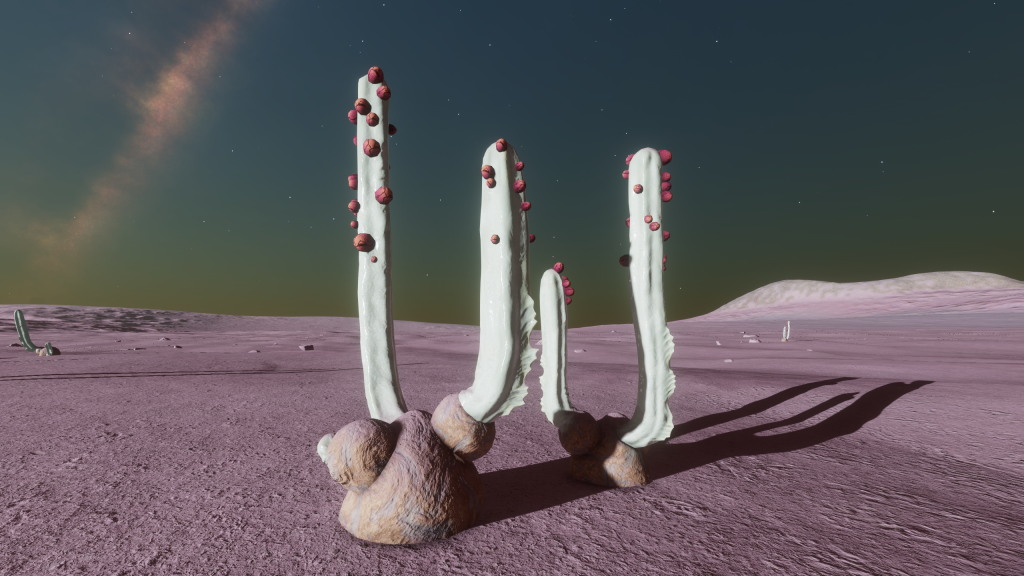
Description
This species of cactoid has a globular base, from which extend vertical cylinders that can reach over four metres. Rounded pods grow in clusters along the cylinders, which break open to scatter seeds.
Conditions of occurrence
- Planets with thin Carbon Dioxide atmosphere
- Maximum gravity : 0.27
- Mean temperature between 180 K and 195 K
Colored variants
Colored variant determined by the parent star type (see above, genus Cactoida)
Cactoida vermis
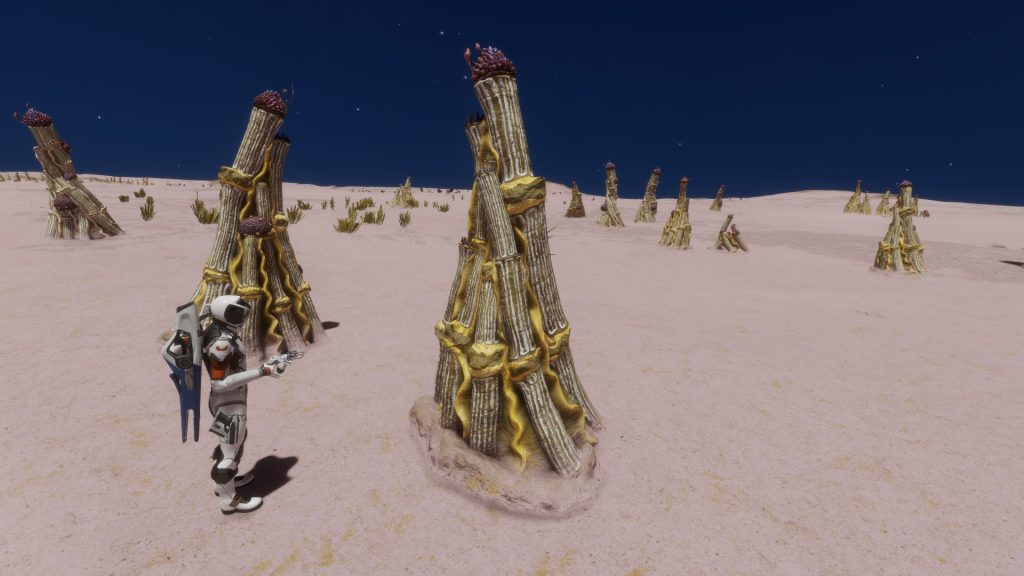
Description
These cactoids appear as a tall collection of cylinders linked by an undulating membrane and topped with a spiky crown. They often have a spiny life-form attached that is thought to form a symbiotic relationship with the larger organism, although the nature of this is not understood.
Conditions of occurrence
- Planets with thin Water atmosphere
- Maximum gravity : 0.27
Colored variants
Colored variant determined by the parent star type (see above, genus Cactoida)

